Microsoft Word's dark mode offers several advantages, such as being easy on the eyes and helping reduce the battery consumption of your device. Yet, sometimes, you may need to revert to the regular mode for better productivity. For instance, you may want to carry your laptop to the nearby park and work outside.
In such instances, using Word's dark mode might affect visibility. So, if you're looking to learn how to turn it off, here's how you can do so.
Change to Light Mode on the Desktop
Changing the theme of one of the Office apps automatically carries your Office themes across the suite to all apps. To change the Microsoft Word theme to the 'White' theme (light mode), follow these steps:
- Launch Microsoft Word on your system and click on the 'Options' button on the lower left side. If Word is already open, then go to
File>Options.
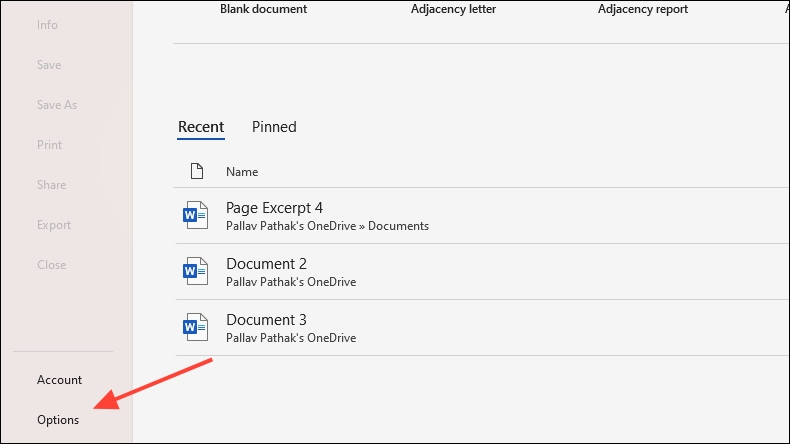
- This will bring up the 'Options' menu. Scroll down to the 'Office Theme' option.
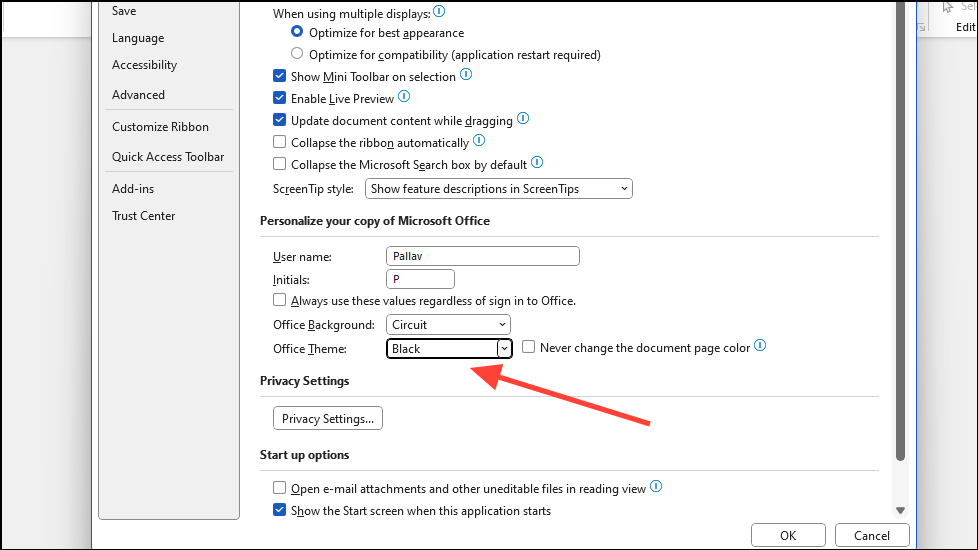
- Click on the small arrow, and you will get a drop-down menu listing different office themes.
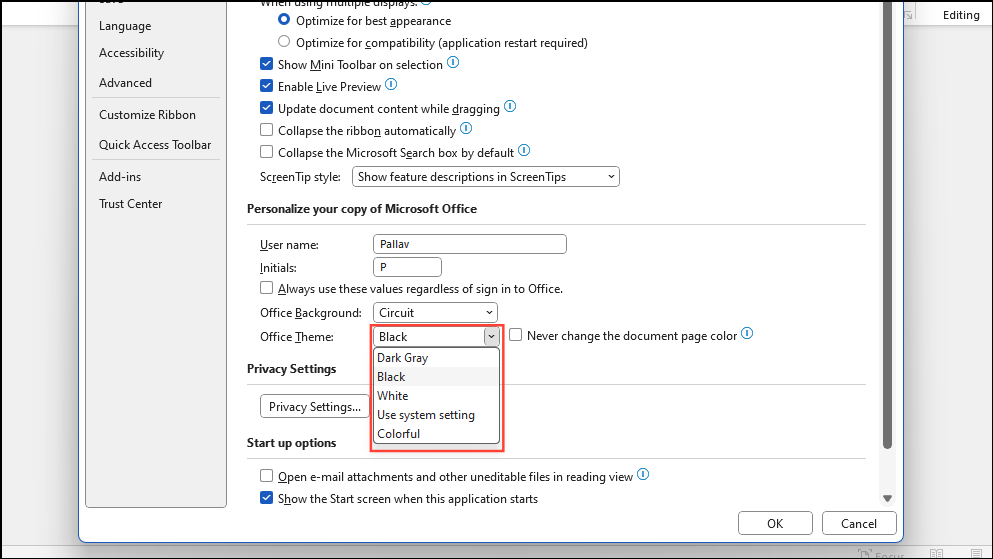
- Select a theme, like 'White' or 'Colorful', by clicking on it to turn off Word's dark mode.

- If you choose the 'White' mode, you'll see that the title bar, ribbon, canvas, borders, and everything is in white now. The difference between the white and default ‘Colorful’ theme is subtle. In the ‘Colorful’ theme, the title bar would be blue, and the ribbon and the window would be light grey (nearly white). On the ‘White’ theme, everything would be in white.
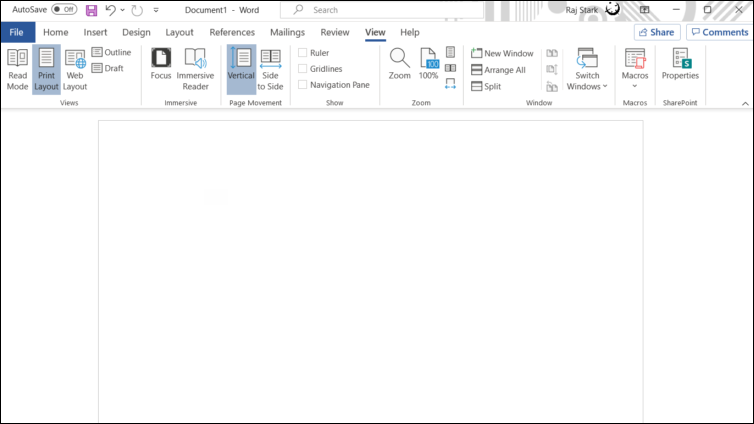
- Alternatively, if you are using Windows with the 'Light' theme, select 'Use System Setting' and click on the 'OK' button.
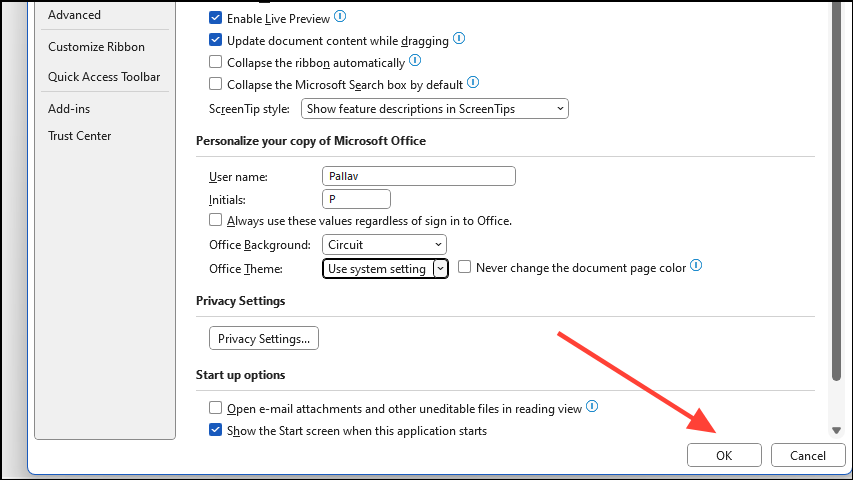
Now, Word will use the light theme, making it easier to use outdoors and in extremely bright areas.
Get White Page in Dark Mode on Desktop
You can also change the editor to white canvas while keeping the black theme of the ribbon, background, and status bars if you like it.
Once you apply the Black theme, you can easily switch between the black and white page background colors without having to switch the theme.
- After the black theme is selected, go to the ‘View’ tab in Word Ribbon.
- There, you’ll see a new button – ‘Switch Modes’ (sun icon) in the ‘Dark mode’ section. Click it to change the background page color to white.
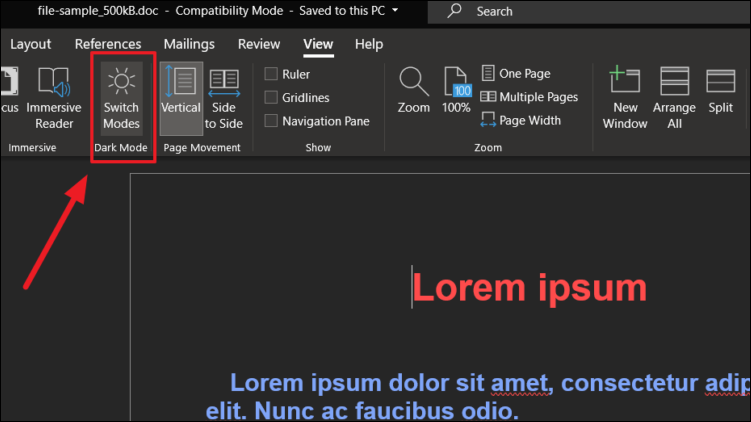
- Doing this will change the editor back to a light mode (temporarily) while leaving the ribbon, background, title bar, and status bars black (as shown below). You can easily switch back to the black page from the toolbar again.
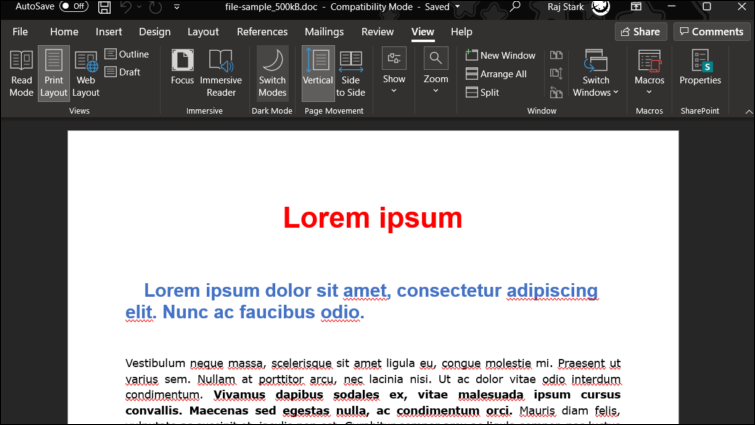
You can also permanently change the editor to the white canvas in the black theme.
- Go to
File>Optionsfrom the Word app. - Then, check the ‘Disable dark mode’ box next to the Office Theme drop-down while the 'Black' theme is selected.

Change to Light Mode on Android
If you use Microsoft Word on Android, you can also turn off its dark mode on that platform by following these steps.
- Launch Word on your Android device and tap on your profile picture in the top left corner.
- On the page that opens up, tap on the 'Settings' option.


- In the 'Display Preferences' section on the settings page, tap on the 'Theme' option to change the theme.
- From the options available, select 'Light' by tapping on it. Now, you just need to restart the app to turn off dark mode.


Whether you're using Microsoft Word on desktop platforms or an Android device, turning off the app's dark mode is quite easy. The only thing to remember is that if you're signed in to your Microsoft account, Word can sync your data between different devices but cannot sync the theming options. So, you will need to turn the dark mode off individually for each device. You can also adjust the setting so that the app shifts between light and dark modes depending on your system theme.











Member discussion